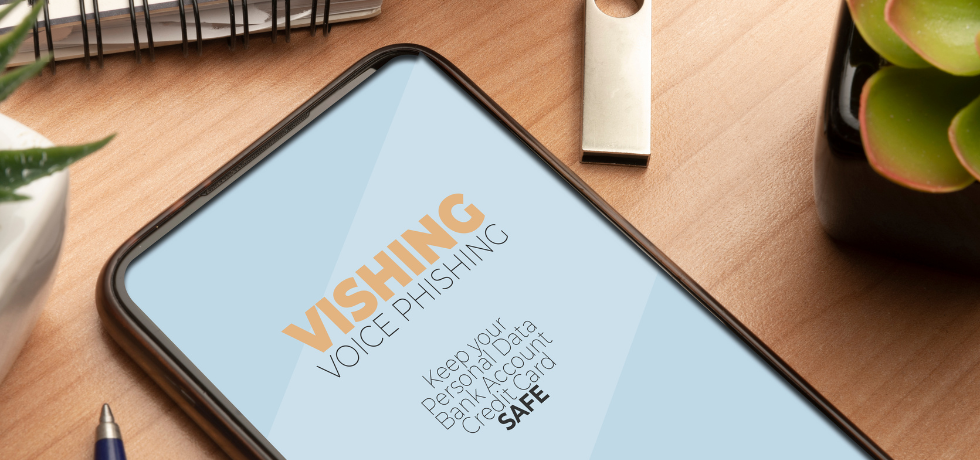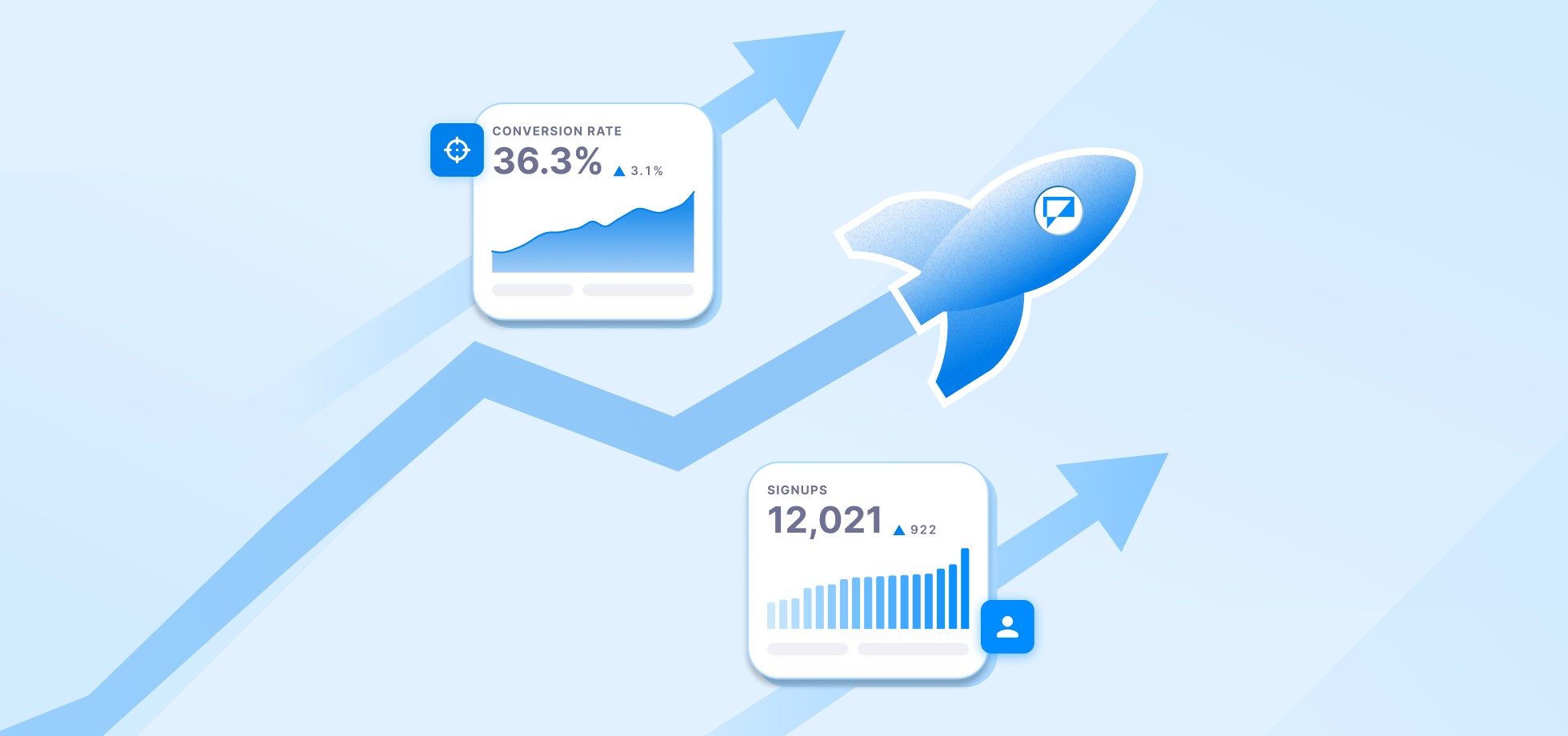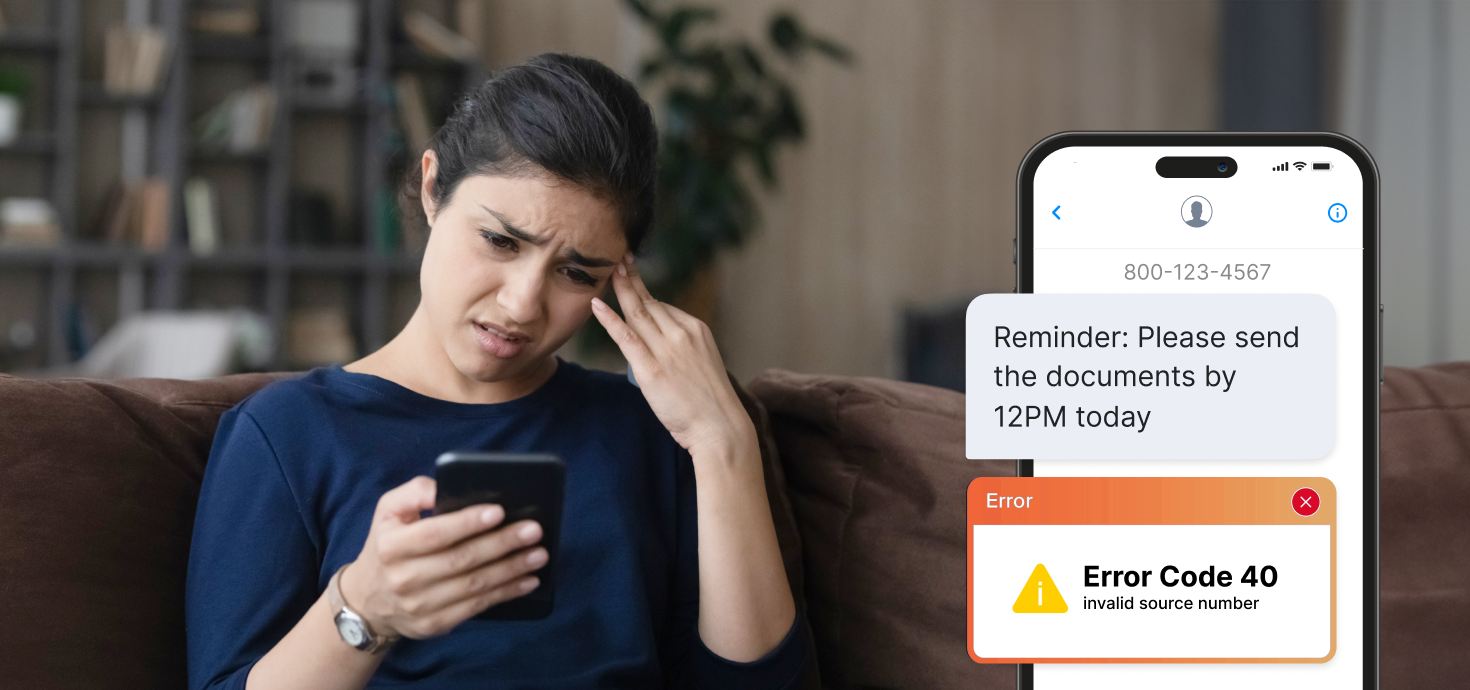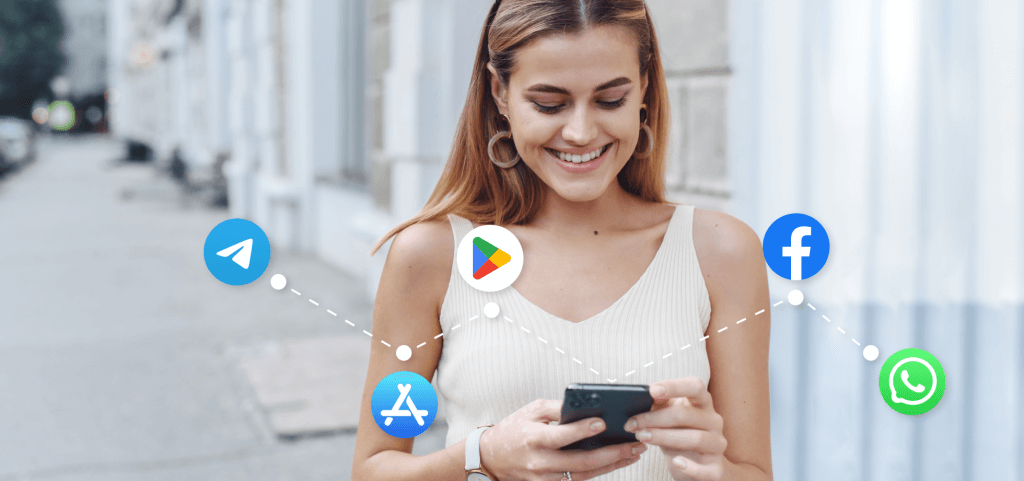
In a world where thousands of apps are released daily, standing out from the crowd seems like a Herculean task. So you might be wondering if there is any secret to unlocking the full potential of app promotion. How can one increase app visibility and improve downloads?
There are no secrets, but there are some proven tactics which will help you compete in a saturated market. This article serves as a comprehensive guide to elevating your app promotion game. From app optimization to leveraging various marketing channels — discover the intricacies to make your app steal the show.
The essential guide to successful app promotion
We have singled out eight effective strategies for app promotion with different business goals in mind: whether it’s the need to improve app visibility, increase downloads, or strengthen user engagement. Check out our guide and choose a strategy or strategies that will work best for your objectives.
1. Optimizing your app store presence
App Store Optimization (ASO) is an indispensable part of promoting your app. A well-crafted ASO strategy maximizes your app visibility. In other words, your app will be ranked higher and it’s going to be easier for your potential users to discover it.
We need to single out three vital elements of a solid ASO. They include:
- A compelling app title
- Accurate description with relevant keywords
- Eye-catching and high-quality app screenshots and videos
Keywords work the same way for App Store Optimization as they do for SEO (Search Engine Optimization). By researching and employing the right keywords, you can enhance app visibility and bring more organic traffic.
When the users discover your app in the App Store, it’s high time for compelling visuals like screenshots and videos to do their job and entice them to download the app.
Reviews and ratings are also a part of ASO, so your app must have honest and positive reviews. User feedback increases credibility and, as a result, helps to boost downloads.
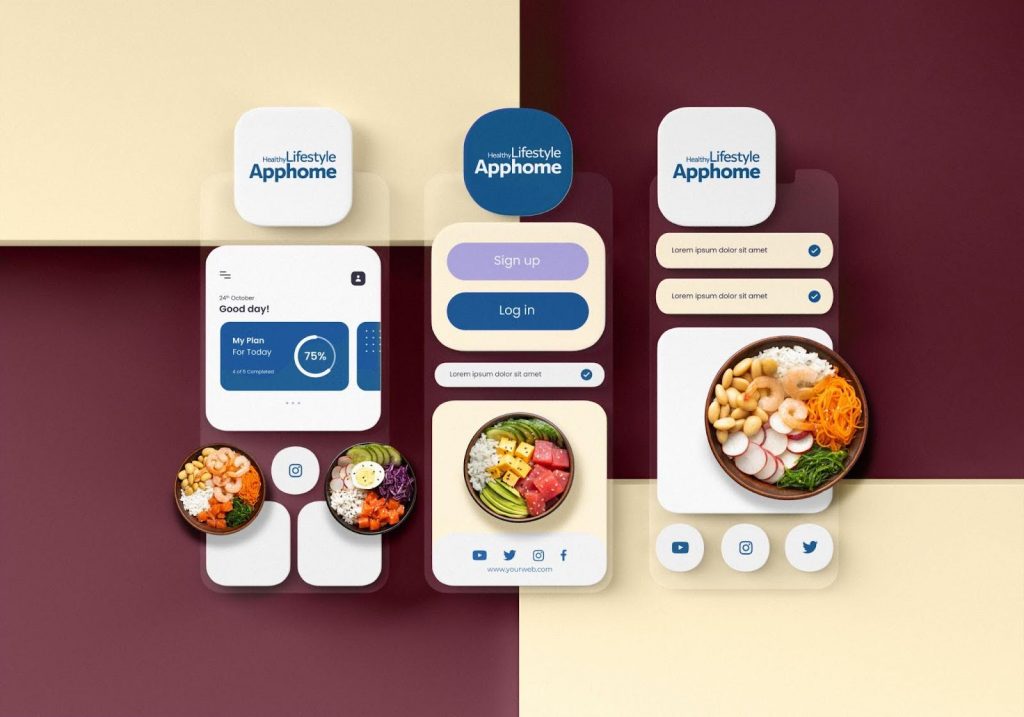
2. Leveraging social media and influencers
Another effective tactic for app promotion is employing social media to boost awareness, foster loyal relationships by community building, and advertise your app to a target audience.
Social media marketing works great at different stages of app promotion whether it’s pre-launch, launch, or after-launch stage.
At the pre-launch stage, you can leverage social media to create anticipation. Craft a teaser campaign for your app and market it on your social media channels or reach an audience with the help of your industry influencers. Teaser videos or some sneak peeks at your app will build up excitement among your potential users.
At this stage, you can also encourage users to become early birds with various discounts and special offers. You can motivate users to sign up for SMS notifications, so they won’t miss out on the discounts and the app launch.
During the launch period consider influencer marketing. Influencers can share their feedback as one of the first to get the hang of the app and the ones who can promote its value.
After-launch stage presents an opportunity for referral programs. Existing users can refer to your app on their social media if you offer them various incentives like in-app premium features, discounts, or rewards.
3. Email marketing for app promotion
When it comes to email marketing, it serves as a solid and consistent way to communicate with your audience. The opportunity to segment and tailor the message to the customer needs helps to increase the open rate, user engagement, and as a result the app downloads.
It’s vital that your promotional emails end up in the right inbox and the right tool will ensure high deliverability. So keep in mind that a simple email marketing service can do wonders when it comes to app promotion.
When choosing a service for your promotional email campaign, remember about a crucial metric — email deliverability. Such things as IP address reputation, sender reputation, and email server have a significant impact on whether your email will reach the recipient. But for this, you need to focus on the email subject line, content, spam words, and spam regulations.
So if you’re new to email marketing and feel like you need some email marketing strategy guide, don’t hesitate to research the topic. Learn about various tactics and analyze successful email marketing examples to get inspired for your app promotion.
By crafting an engaging and personalized message with great visuals and clear CTAs, you can better communicate the benefits of your app.
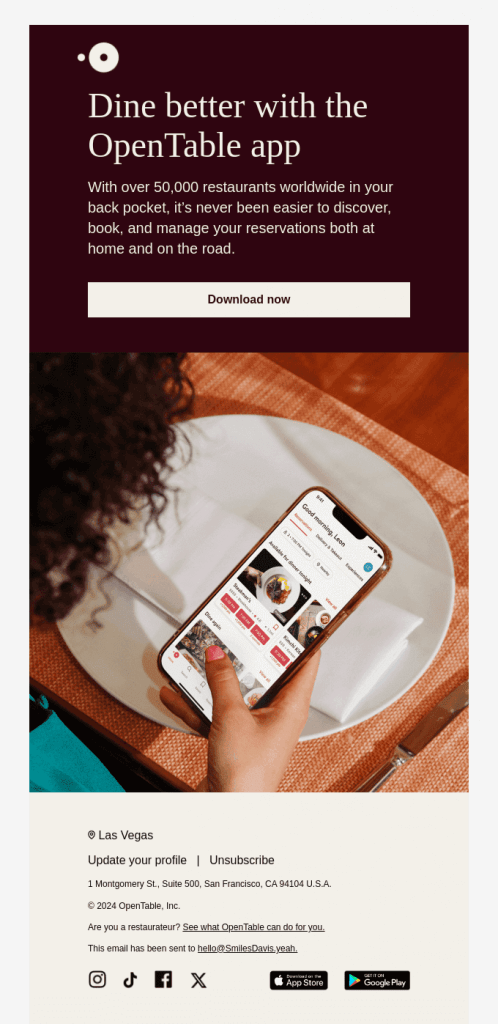
Image source: Reallygoodemails.com
4. Text messaging service for marketing
Another marketing strategy for your app involves using text messaging. This is a great channel for building a subscriber list, tailoring a personalized message to a segmented audience, and measuring your results with robust analytics.
There are many text message strategy tips on how SMS marketing can be used as a separate channel for app promotion as well as a part of an integrated marketing strategy. For example, you can use SMS to strengthen your email marketing. You can send messages as a backup or a reminder for important emails including sales and discounts for your app, or transactional emails like password reset or app log-in process.
As a separate channel for promotion, text messaging enables personalized automation following the stage of the customer journey. This way, your users and potential ones will receive the right message at the right time, thus meeting their needs. Online text messaging helps to optimize your SMS campaign: you can craft, spell-check, and deliver your texts faster. Plus, working with text message software makes it more convenient to track and analyze your results.
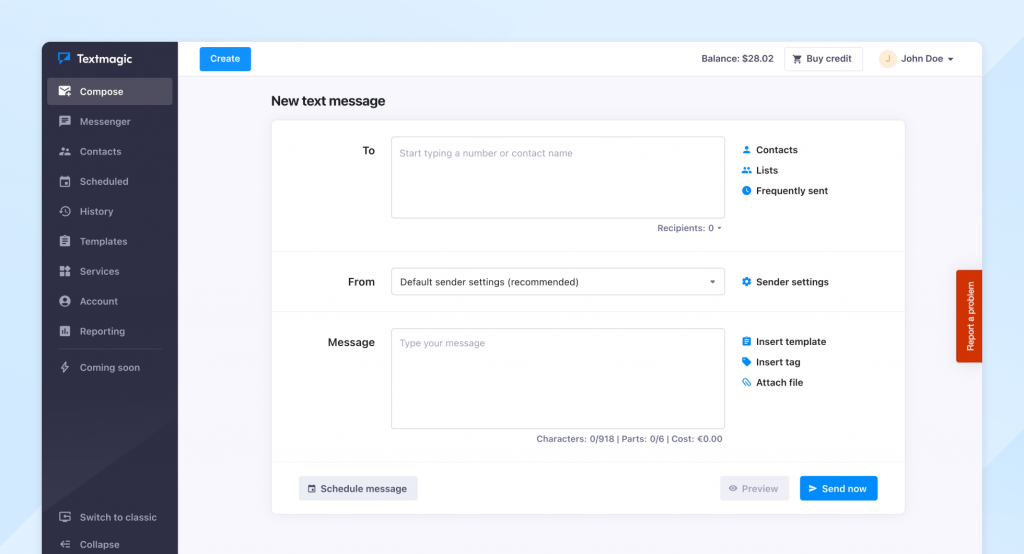
5. Content marketing and SEO
Both content marketing and SEO play a crucial role in bringing organic traffic to your app’s website or landing page. Not only can you improve engagement by creating informative blog posts, educational videos, or infographics, but you can also encourage more leads to download your app.
Make sure you create high-quality content that is truly valuable for your customers. When crafting your content strategy, think of building a sense of community for your users. By having a stronger connection with your customers, you’ll understand them better and they’ll trust you more to give your app a go.
As for SEO, it’s an indispensable part of your content to be visible and ranked higher in search engines. Otherwise, no matter how great your content is, your users won’t encounter it without relevant keywords.
6. Paid advertising
Paid advertising (also known as user acquisition) is a quick way to target a specific audience for promoting your app. The main advantage of this tactic is the ability to reach a wide audience of users who are likely to download your app. Paid ads allow you to target people based on specific criteria, including demographics, purchasing behavior, interests, and many others.
You can choose a platform that you think will work the best for your app promotion: Google UAC, Facebook Ads, or Apple Search Ads. With paid ads, your app will have better visibility, rank higher, and as a result, increase the downloads.
Surely, this tactic requires a well-thought-out campaign with relevant keywords, a clear message, and compelling visuals that can be used as banners, videos, or native ads.
7. In-app marketing
In-app marketing involves various strategies to make sure your app is successful. From increasing user engagement to improving experience, from enhancing retention to boosting revenues — all this can be done thanks to personalized and timely communications via your app.
Basically, we can single out several types of in-app marketing, including:
- In-app messages and push notifications
This is the communication with users within the app that involves sending various messages based on the user’s behavior. It involves alerts, personalized offers, updates, re-engagement, and many other messages to ensure smooth communication with users.
Don’t mistake in-app notifications and SMS, as while they have many things in common, there are moments when one method is preferable over the other. For example, push notifications work better for interactive engagement within the app, while SMS are great for straight and instant communication no matter the internet connection. However, the best tactic is to use both to enhance your marketing efforts.
- In-app ads
These types of ads are great for retargeting your existing users. You can promote your other products within your app or advertise your app via third-party apps. But for this, you can re-engage your inactive users: whether they’ve uninstalled your app or haven’t finished the purchasing process. Target them with banners, interstitials, videos, or native ads that will persuade them to get back to your app.
- In-app personalization
According to Statista, tons of companies spend more than 50% of their budgets on personalization efforts. Nowadays users expect personalized app experiences tailored to their needs: from something as simple as using their name in messaging to custom recommendations and functionality adjusted to their individual needs.
- Surveys and feedback
This strategy is an indispensable part of your mobile app growth. Learning about your user’s satisfaction and, most importantly, dissatisfaction, unveils the areas for improvement. App promotion doesn’t stop with your users downloading the app. To foster lasting relationships with existing users and bring more new ones, you’ll constantly need to improve your app to keep in touch with users’ needs.
- Rewards and loyalty programs
By providing your users with discounts, special offers, and free access to limited features, you can improve user experience. As a result, they’ll be more likely to use your app more actively, make in-app purchases, and refer to your app as the one they can truly recommend.
8. Analytics and metrics
Last but not least, it’s essential to monitor the key performance indicators (KPIs) of your marketing campaign. A successful app involves regular optimization, taking your results into consideration. With the help of analytics, you can better understand how your users interact with your app and then make data-based decisions for improvement. Among important metrics to measure are the following:
- Active users
These are the users who interact with an app within a particular period. These metrics can help you with understanding your app’s popularity, reach, level of engagement, and customer loyalty.
- Session length
As the name suggests, this metric involves tracking how much time a user spends interacting with an app during one session. Surely, the longer the user spends on the app, the more engaged and interested they are.
- Retention rate
This will help you monitor how well your app can retain users: whether they come back to your app over and over again after the initial use.
- Conversion rate
With conversion rate, you can track how many users completed the desired action like making a purchase, subscribing to something, or downloading an app or additional content.
- Revenue
One of the most important KPIs is revenue rate. It indicates the financial success of your app. In other words, how much revenue you received through purchases, subscriptions, and other ways.
Wrapping up
As you see, there are many ways to communicate with your potential and existing users to promote your app.
Each channel and method offers a wide range of opportunities to increase awareness, improve engagement, convert customers into active users, and most importantly, retain them by keeping users engaged. Select which marketing strategy suits your company’s needs the most or combine various methods to boost your efforts in app promotion.
Frequently Asked Questions (FAQs)
App store optimization (ASO) remains foundational.
Optimizing your app’s name, description, and visual assets, and leveraging positive reviews helps boost visibility in app stores and drives downloads over time.
Absolutely. Timely emails or SMS can re-engage inactive users, introduce new features, or share useful content.
This is a strategy that drives in-app activity and retention when combined with click-through CTAs.
You can use Textmagic’s features, such as scheduled campaigns, two-way SMS, and contact segmentation, to send personalized messages that keep users engaged long after download.
Yes. Influencer partnerships and targeted paid ads (on platforms like Instagram, TikTok, or apps relevant to your niche) can help build credibility and drive installs quickly, especially when based on well-defined user profiles.
Robust platforms offer campaign automation, audience segmentation, scheduling, analytics, and multichannel support (email, SMS, in-app push). This ensures seamless messaging, precise targeting, and measurable performance across all touchpoints.
Related articles
What is vishing? Unmasking voice phishing scams and techniques
Vishing, an insidious blend of voice communication a...
What is product-led growth, and how to apply it to your SaaS company
PLG (product-led growth) is gaining popularity as th...
SMS texting vs instant messaging: What are the differences
Instant messaging and texting both allow you to conn...
Text message errors: Why SMS delivery fails and how to fix it
You know that moment when you hit “send”...
Are you tracking the right email KPIs? A reality check for small businesses
Small business owners and marketers wear multiple ha...
